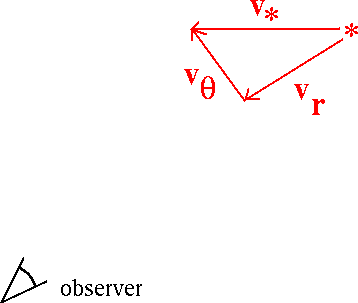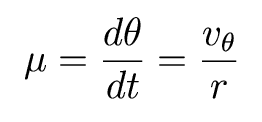The Doppler Shift
If an object is moving toward us or away from us, its light
will appear shifted in wavelength:
-
Moving towards us: blueshift
-
Moving away: redshift
(Think of the analogy of the train whistle.)
This doppler shift
is given by

where c is the speed of light. If the motion is nonrelativistic,
ie vr<<c, this boils
down simply to

Things to notice:
-
The velocity in question is line
of sight radial velocity.
-
As defined, if vr is positive the object is moving
away.
The Motions of Stars
Remember, Doppler shift only gives us a star's radial velocity.
There is also a tangential component to the star's motion.

How do we determine this tangential component? Watch a
star for a long time (years). Then measure how far it moves in the sky.
The rate at which it moves is called its proper
motion. For example, Vega's proper motion is 0.345"/yr.
Then remember that proper motion (mu) is an angular motion
across the sky. It is related to the true tangential velocity by
 More things to note:
More things to note:
-
Proper motion must be converted into radians/time
for that equation to work.
-
We can't solve for the tangential motion until we know the
distance to the star.
-
At a given velocity, distant stars have smaller proper motions.
Once we have a radial velocity, a proper motion, and a distance,
we can solve for the true space motion
of the star:
 Most stars near the sun have space motions of 30 km/s or
less.
Most stars near the sun have space motions of 30 km/s or
less.





